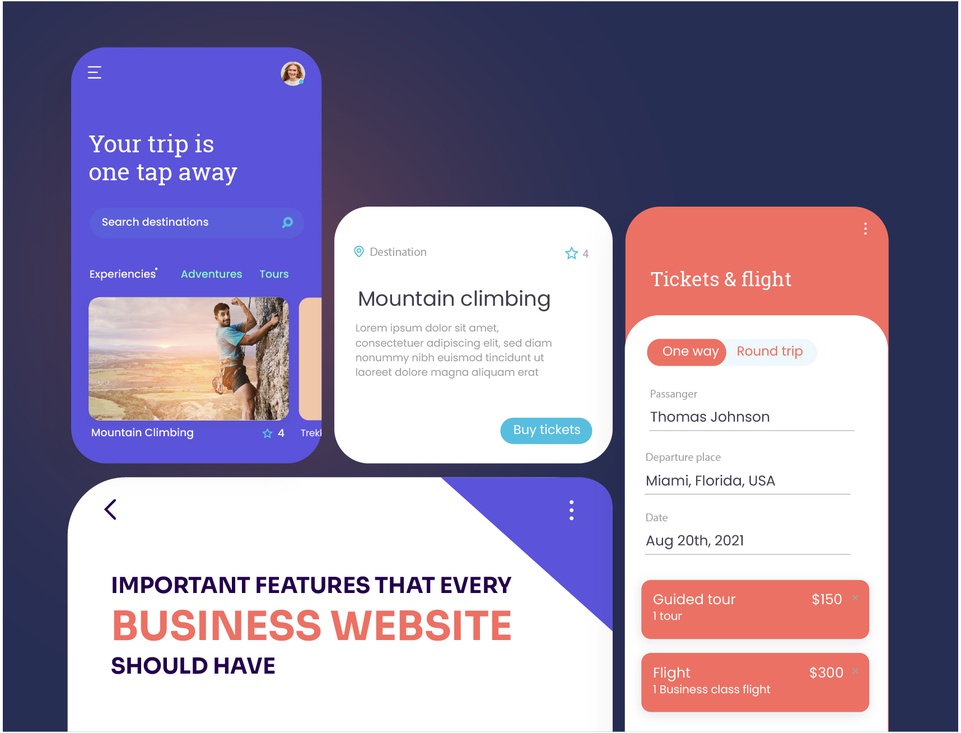What are the Features that Every Website Should Have?
Every website is different and in the process of making a website, there are a few things that should always be considered when you're creating and developing. You need to establish a positive first impression on visitors to your website and make it plain to them why your website is there in the first place. Define what your goals are as a business and the areas that you will cover. Ensure that your site includes a mission statement or a message that briefly describes what your company does.
This is similar to how to create a website or a blog if you think about it that way. You work for days, weeks, or even months to create the ideal website. You use a portion of your company's budget to produce this fantastic user experience in the hopes that it would enhance customer satisfaction and the number of customers or visits. There shouldn't be any elements left over after building a site or redesigning an existing one.
The best user experience should be achieved when learning web design. To accomplish this, check each section of your website to make sure it contains these essential components. The qualities listed below are intentional components of a website that visitors have learned to expect and will make a pleasant impression on everyone who visits it.
Here are a few important features that every website must have -
- An Apparent Description of Your Business: If visitors accidentally stumble into your website, you need to make a positive first impression and clear to them why it was created in the first place. The purpose and aim of your website should reflect your business. Ensure that your site includes a mission statement or hero message that briefly describes what your company does.
- Call to Action: A website is a good idea. It is best to direct traffic to that website. In the end, getting those visitors to turn into actual customers or leads matters. You need to be clear about the action you want people to take after they land on your webpage in order to accomplish that. That could entail buying something, filling out a contact form, or signing up for a newsletter. Tell visitors what you want them to do by using thoroughly thought-out calls to action.
- An easy URL: If your company is new and does not yet have a website, you might be eager to get one up and running as quickly as possible. But while choosing a URL, be sure to do your homework and proceed with caution. Make your choice unique and keep in mind your business objectives. Several guidelines The URL should be straightforward for users to type into their browser's address bar and should be simple to promote. Another good rule of thumb is to always use.com or.org web addresses. Users and search engines view these as more reliable.
- Pleasing Displays: When it comes to accessing the internet, so many people use their smartphones and tablets. This implies that if you're going to create a website for your company, you very much have to make sure that it will look good on smaller displays. Making this a high focus ensures that both your mobile and desktop visitors receive excellent customer service. A bonus, too? You may benefit in terms of search engine rankings.
- Staff portraits and bios: Customers are interested in more than just what you do. They are curious about you. People want to interact with you personally in today's automated environment, therefore you should promote yourself on your website. Additionally, consumers feel more trusted when credentials are combined with a face, which is something everyone seeks when exchanging money.
- Inside Links: While making a website, it is feasible for you as a business if your website is more than just a layout or description of the landing page. This will only draw more and more visitors to your page. Instead, encourage users to explore the rest of the website from your homepage. Promote appropriate spring fashions or offer links to recent blog posts. Internal links encourage readers to browse your page for longer, which enhances the likelihood that they will make a purchase.
- Live Chat: Websites are using live chat software more frequently as a way to communicate with visitors and offer superior customer support. If you are using a live chat service, be sure to prompt people to chat after a certain amount of time on the homepage or another internal link.
- Browse Bar: Some visitors to your website already know what they want and only need help to find it. By using the search bar on your homepage and all other site pages, users can take control of their website experience.
- Logo: Logos ought to be prominently displayed on the homepage. Small, simple graphics called logos help customers associate your business with that image in their minds. Although people might not always recall your company's name, they could recognize your logo.
- FAQs: Visitors can find solutions to previously posed questions on these sites. This makes visitors feel more independent and lessens the need for your employees to frequently answer the same queries.
To Sum Up -
Your website's home page serves as each visitor's first introduction to your company. Basically, your landing page and homepage will be the deciding point as to whether anyone would want to be a customer or not. It is where your potential customers can get a sense of what you sell and what are their needs accordingly. Use the features mentioned above on your homepage to make a great first impression.
More Reading
- 7 Major Steps in Designing a Website
- Why choose Designzoned for affordable website design?
- Why graphic designing is important to any business?
- Top 10 Tips - How to design a Logo for your website?
Our Services:-
Logo Design Graphic Design Website Design
